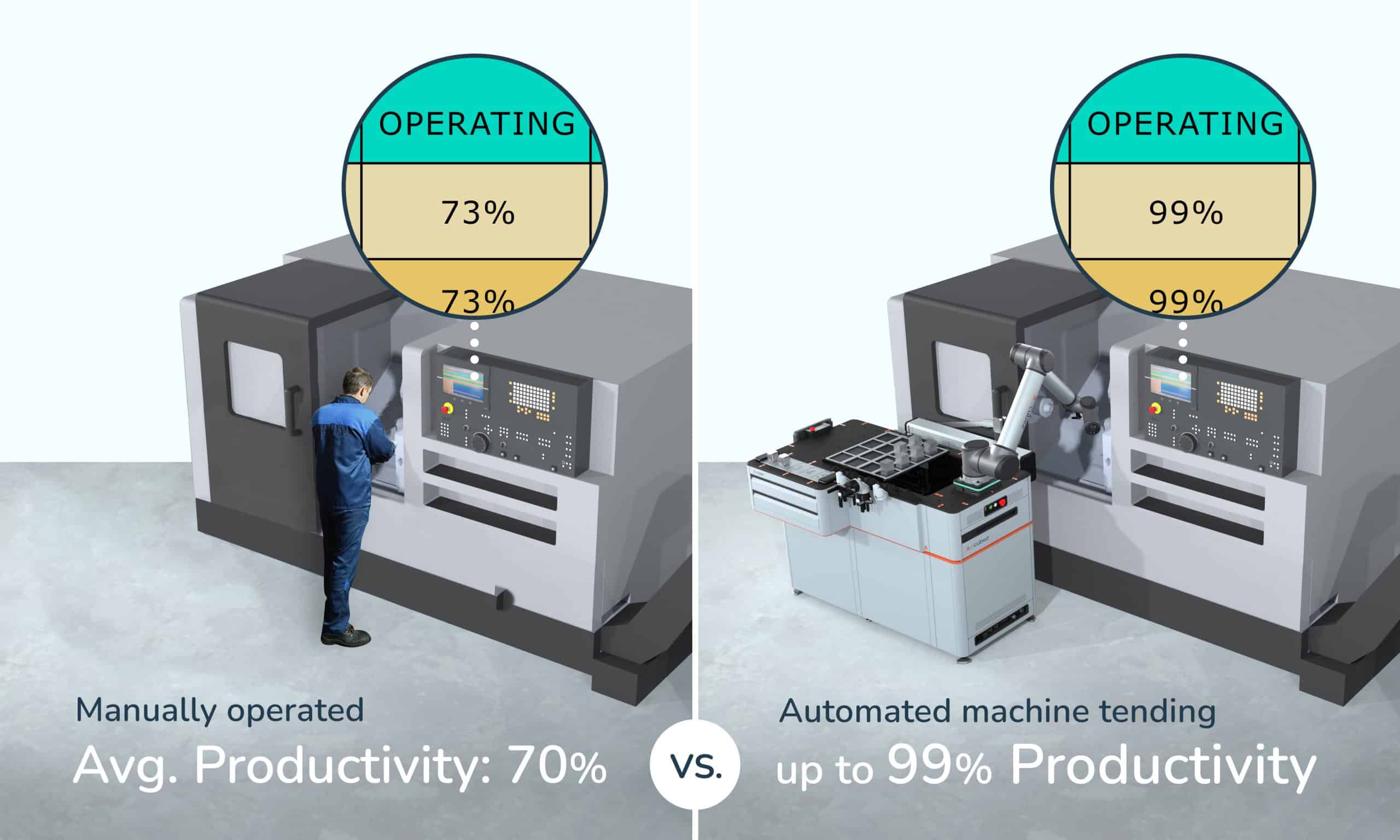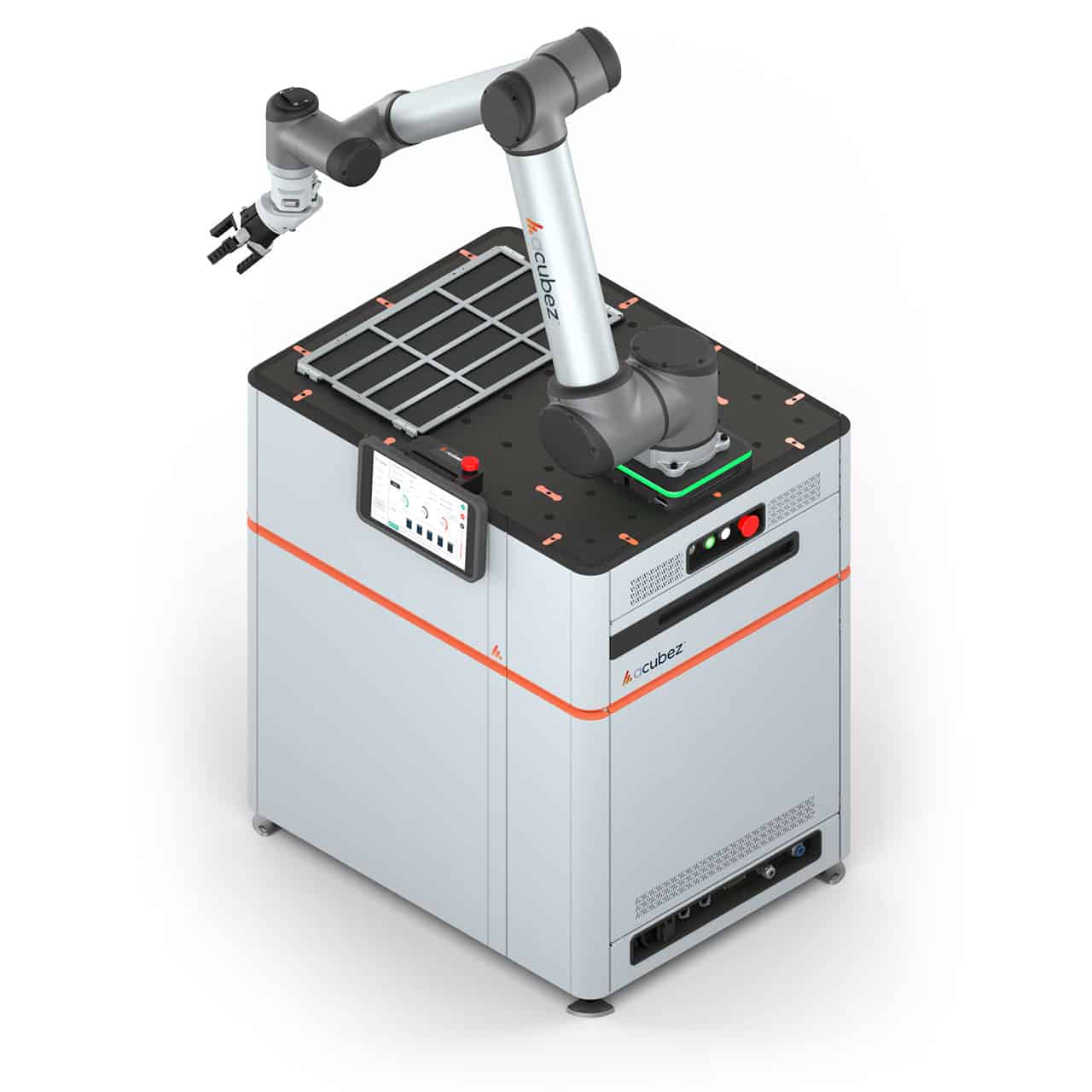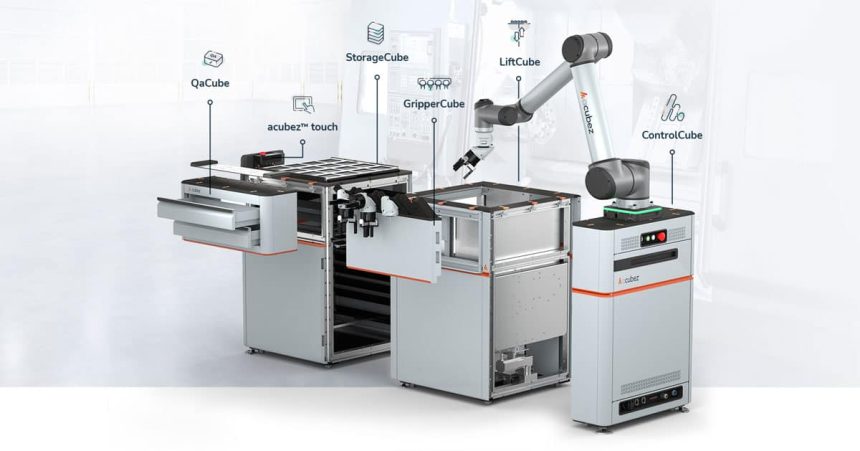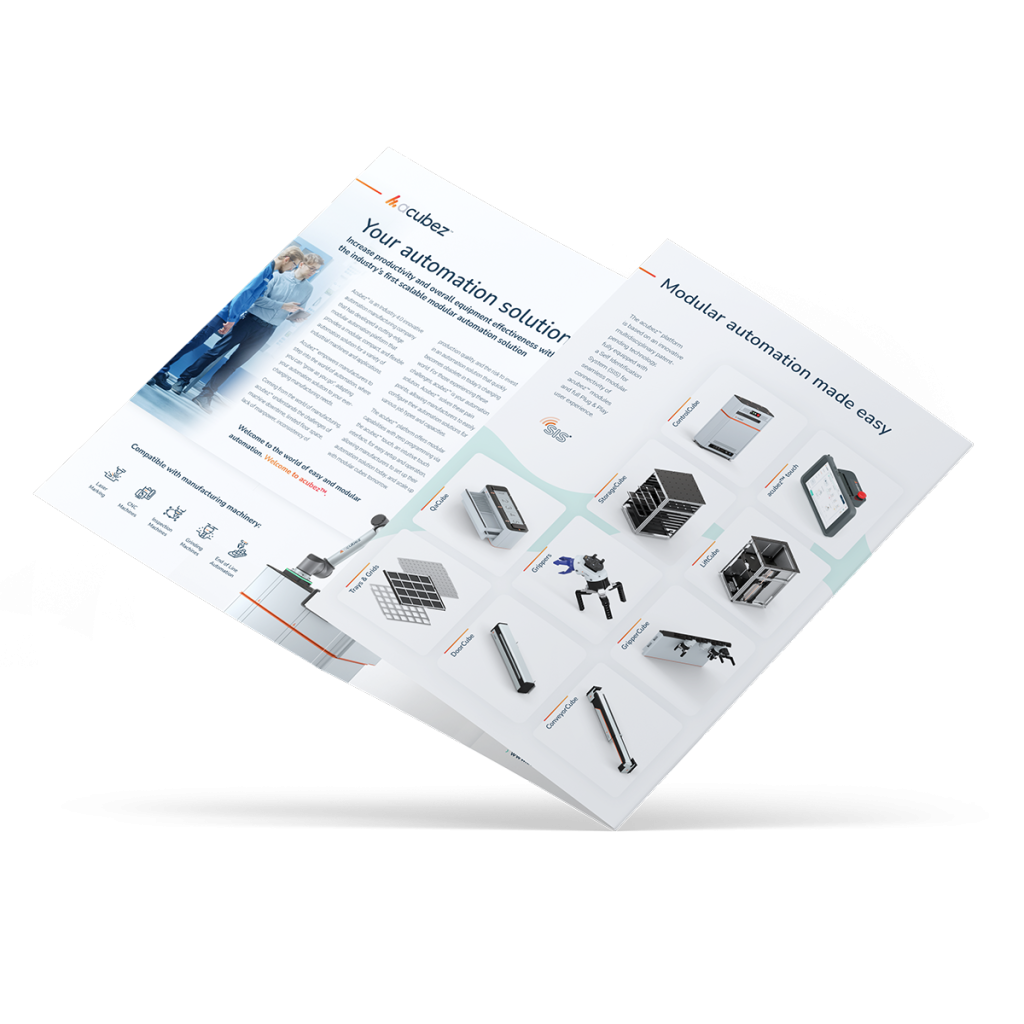How scalable and flexible modular automation is revolutionizing the manufacturing industry
As of recent, Industry 4.0 has progressively transformed the methodologies and constructs in which manufacturers approach the core processes of their business. Bringing opportunity to multiple areas of operation, from human resources to profitability, automation continues to break down the barriers of stepping out of human-operated machines to robotic CNC machine tending solutions; providing productivity-boosting solutions.
Coming in numerous forms, manufacturing automation platforms continue to develop in their level of affordability, scalability, and user-friendliness. Leading today’s market in these categories are end-to-end modular automation solutions.
In comparison to traditional industrial automation solutions, which have been dominated by large, rigid, and costly systems, the emergence of a modular concept in the manufacturing industry is creating new and strategic opportunities for high mix low volume (HMLV) manufacturers. To explore these benefits, a manufacturer may look no further than their own factory floor space, expenses on setting up their robotic machine tending, costs to adjust their system as the company grows, safety requirements, and an overall increase in productivity and flexibility. Leading Modular automation benefits are1:
- Faster time-to-factory floor
- Increased productivity and efficiency with robotic machine tending
- Greater affordability
- Low-investment: future-proof automation solution
- Minimal safety requirements
Faster time-to-factory floor
Turn-around time from ordering to operating a modular automation platform is among the top benefits for factory owners who are entering the world of automation for the first time. In comparison to large industrial solutions, which can take between 12-24 months to arrive on-site, compact cobot-based solutions typically arrive on factory floors within 3-6 months from order.
A modular automation solution can then be set up within just 1-5 days upon arrival, with minimal to no programming needed to get up and running. Moreover, modular platforms can be installed by a production manager or floor worker – in contrast to the costly support of specialized technical engineers needed when installing large rigid platforms.
What allows for such a quick time-to-factory floor turnaround? Each individual automation solution is built, assembled, and tested offsite before shipping. Furthermore, the modularity of the platforms allows for controlled customization; enabling manufacturers to customize their configuration with a variety of add-ons, which are all chosen from prefabricated modules that are ready to ship on order.
Increased productivity and efficiency with robotic machine tending
In the current HMLV industry, the majority of CNC manufacturing is fully set up and managed by human operators. The resulting risk of manpower shortages has been exemplified in recent years, convincing many business owners to explore the opportunities of low-risk, CNC machine automation. In greater detail, the productivity benefits of modular automation are 1:
- up to 50% more machine up-time
- up to 50% less costly compared to larger solutions
- up to 20% lower life cycle management investment
For flexible production plants, typical increases can include:
- up to 40% faster time to market
- up to 80% faster rearrangement of production equipment
- almost zero automation engineering to copy and adapt a production line
- up to 50% less capital expenditure.
Modular automation platforms are able to supplement existing and future lack of manpower while maintaining up to 100% fully – automatic CNC machine up-time around the clock.

Greater affordability
Among manufacturers’ greatest hesitations to implement automation has been the historically high level of investment required to begin automating job processes. Owners and managers are cautious regarding the costly and highly trained personnel needed to set up and operate modular automation systems, having large and rigid solutions on-site (which are difficult to move and take up a lot of floorspace), and longer ROI periods that tend to go with large solutions.
The answer to these barriers to automating is found in the market’s compact, more affordable, easy-to-use modular solutions. Once a modular automation platform has been installed, the ROI period is dramatically shortened with an immediate increase in overall equipment effectiveness (OEE).
Furthermore, modular automation allows for the standardization of manufacturing processes as well as the creation of parallel equipment algorithms. Modules can easily be calibrated to various machinery (CNC, lathe, laser marking/engraving, inspection, grinding, etc), thereby improving the capability and speed of product changes. There is no need to bring in external engineers for each procedural change, thus minimizing time and financial investments. These increases in plant efficiency result in higher productivity, speed of product changes, and overall competitiveness by simply adding robotic machine tending to exisiting machines.
Low-investment scalability for your CNC machine automation solution
The future investment required for a manufacturer’s automation solution is a common concern for a business owner. The unforeseen cost of changing the equipment, kinematics, and placement of traditional systems can be enough to reject automation altogether.
Low-investment while providing automation scalability is an additional benefit. Built as a sum of modular parts, the dynamic system allows owners to simply Plug & Play new modules that scale up the abilities of the current platform to provide greater value and support the everchanging production tasks in high mix low volume manufacturing. Robotic machine tending is a future-proof investment for manufacturers.
Robotic machine tending with minimal safety requirements
Sacrificing floorspace for automation equipment on a running manufacturing floor is one of the greatest pain points for any manager or owner. Equally, the safety zone requirements that accompany larger traditional industrial solutions can force a floor manager to rearrange his factory to accommodate the new systems.
Thus, the minimal requirements that accompany modular automation are among the top benefits of modular automation. The acting robot arm of the market’s most compact platforms, which normally acts as the most dangerous part of the solution, is most often a collaborative robot. Machine tending robots are oftentimes installed, backed with an internal job risk analysis, without the need of a safety fence or laser fence; maintaining an average footprint that is no larger than that of a tooling cart.
As a leading end-to-end solution in the category of automation safety, the acubez™ cobot-based platform brings an additional, propriety advantage. The solution comes equipped with a tailor-programmed robot arm that auto-calculates the platform’s optimal movements and timing with calculation algorithms. The ControlCube, which acts as the brain of the acubez™ platform, even prioritizes the CNC robot arm’s movements to keep the arm within the body of the platform to reduce safety concerns to a minimum.
About acubez™ modular automation platform
Acubez™ is an Industry 4.0 innovative manufacturing automation company providing an end-to-end solution for high-mix, low-volume manufacturing with its cutting-edge modular automation platform. With compact, flexible, and scalable solutions for increasing productivity, acubez™ enables manufacturers to automate robotic machine tending today and scale up tomorrow. Download the acubez™ product catalog now, or request a quote here.
Footnote:


